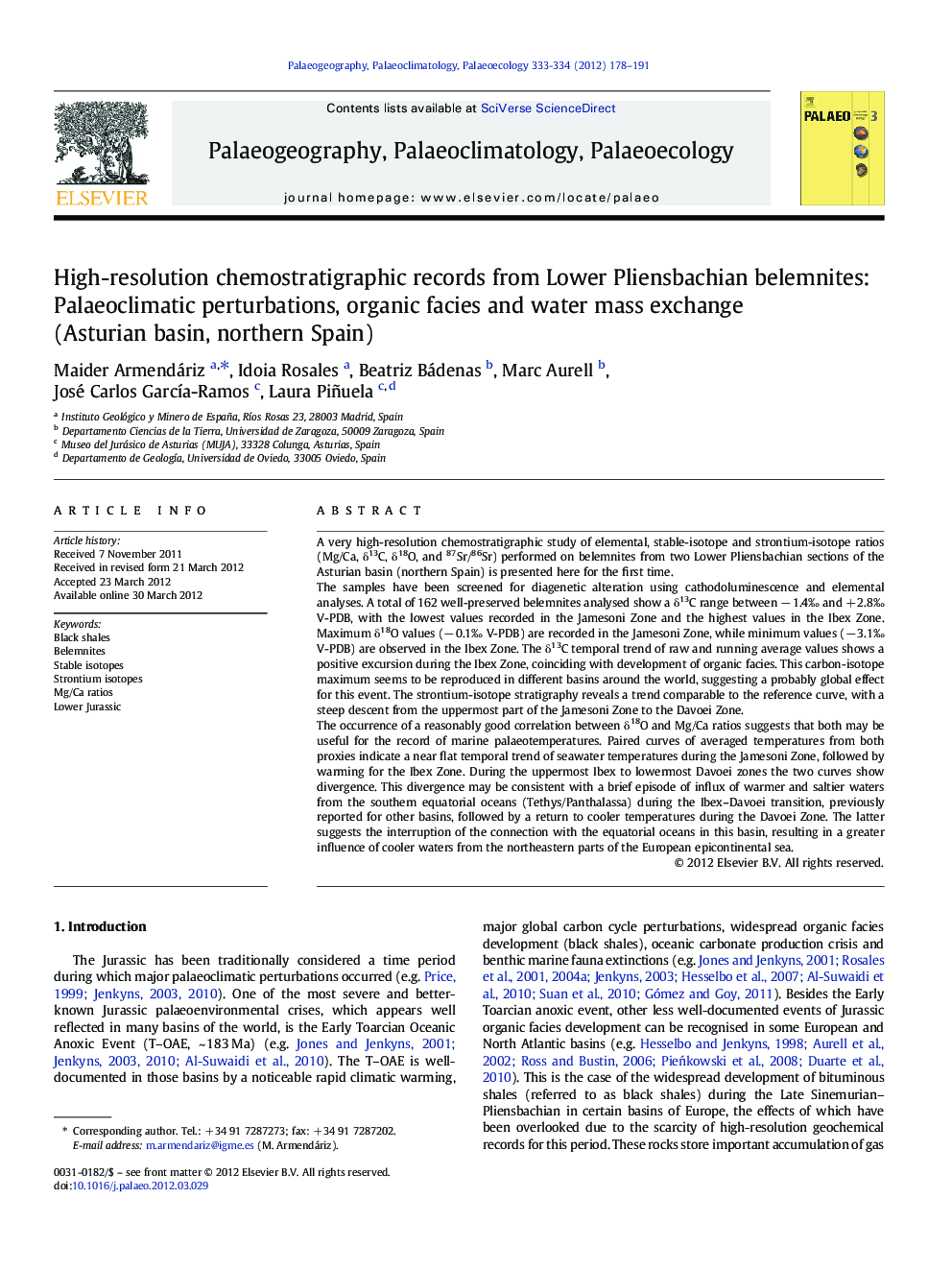| کد مقاله | کد نشریه | سال انتشار | مقاله انگلیسی | نسخه تمام متن |
|---|---|---|---|---|
| 4466955 | 1622233 | 2012 | 14 صفحه PDF | دانلود رایگان |

A very high-resolution chemostratigraphic study of elemental, stable-isotope and strontium-isotope ratios (Mg/Ca, δ13C, δ18O, and 87Sr/86Sr) performed on belemnites from two Lower Pliensbachian sections of the Asturian basin (northern Spain) is presented here for the first time.The samples have been screened for diagenetic alteration using cathodoluminescence and elemental analyses. A total of 162 well-preserved belemnites analysed show a δ13C range between − 1.4‰ and + 2.8‰ V-PDB, with the lowest values recorded in the Jamesoni Zone and the highest values in the Ibex Zone. Maximum δ18O values (− 0.1‰ V-PDB) are recorded in the Jamesoni Zone, while minimum values (− 3.1‰ V-PDB) are observed in the Ibex Zone. The δ13C temporal trend of raw and running average values shows a positive excursion during the Ibex Zone, coinciding with development of organic facies. This carbon-isotope maximum seems to be reproduced in different basins around the world, suggesting a probably global effect for this event. The strontium-isotope stratigraphy reveals a trend comparable to the reference curve, with a steep descent from the uppermost part of the Jamesoni Zone to the Davoei Zone.The occurrence of a reasonably good correlation between δ18O and Mg/Ca ratios suggests that both may be useful for the record of marine palaeotemperatures. Paired curves of averaged temperatures from both proxies indicate a near flat temporal trend of seawater temperatures during the Jamesoni Zone, followed by warming for the Ibex Zone. During the uppermost Ibex to lowermost Davoei zones the two curves show divergence. This divergence may be consistent with a brief episode of influx of warmer and saltier waters from the southern equatorial oceans (Tethys/Panthalassa) during the Ibex–Davoei transition, previously reported for other basins, followed by a return to cooler temperatures during the Davoei Zone. The latter suggests the interruption of the connection with the equatorial oceans in this basin, resulting in a greater influence of cooler waters from the northeastern parts of the European epicontinental sea.
► Strontium isotope, steep descent from the uppermost Jamesoni to the Davoei Zone
► Negative δ18O and positive δ13C excursions, coevally with black-shale development
► Warming of seawater for the Ibex Zone, coinciding with deposition of black shales
Journal: Palaeogeography, Palaeoclimatology, Palaeoecology - Volumes 333–334, 15 May 2012, Pages 178–191